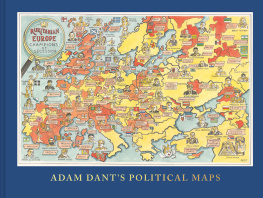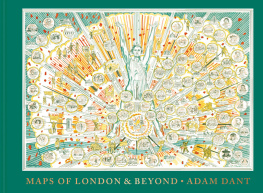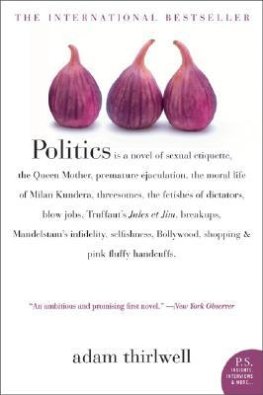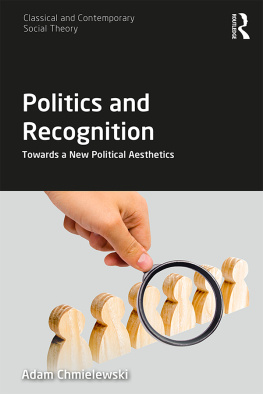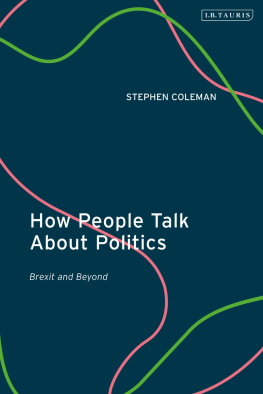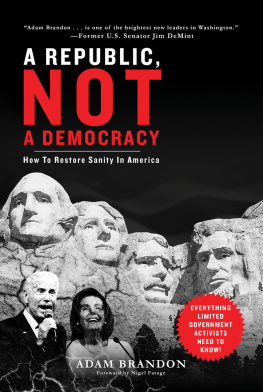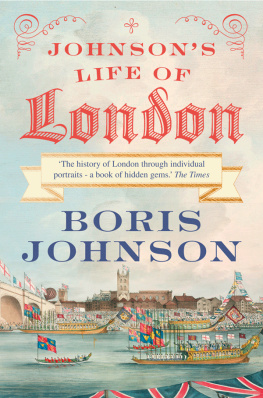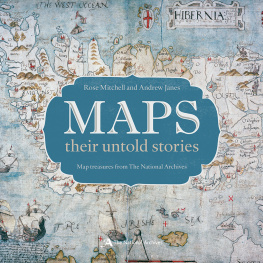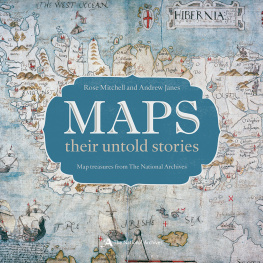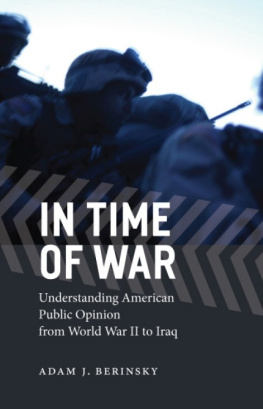Contents
Guide


CONTENTS
THE ART OF POLITICS AND THE POLITICS OF ART: MY LIFE AS A POLITICAL ARTIST
W hen artists apply the qualification political to describe themselves and their practice it rarely means that they are involved in conventional politics.
Typically the political map as opposed to a physical map is a map that shows territorial borders, and though the maps illustrated and described within the pages of Adam Dants Political Maps do not for the most part describe the world according to its borders, their engagement with the political as a facet of the everyday life of the electorate worldwide can be deemed political enough for the Chinese Communist Party to discourage all the printers of their nation from printing such a book.
Within this particular atlas the parameters of what constitutes a political map are stretched as wide as possible so as to include such diverse subjects as A Global History of Chocolate, The Metaphysical Life of the Sculptures at the Seats of Learning in Cambridge and The Gutter Language of the Parisian, as well as the more obviously political themes of US Presidents, British Left Groups and for the reader who just happens to also be a serving UK politician a handy map showing the locations of all the Division Bells in Westminster.
Maps as a tool most famously manipulated by leaders, politicians and the occasional despot have provided us with the current widespread and slightly hackneyed Magritte-style view that the map is not the territory. In the way that the political maps within this tome have been wrangled and wrought to serve all manner of unusual functions, such as in the creation of a Cockney Rhyming Slang glossary of the United States of America, there is barely even a slim possibility of their being taken as depictions of reality.
Rather than existing as vehicles for polemic, proselytizing, pamphleteering or even as mere entertainment, these political maps append the cartographic milieu to an aesthetic and intellectual exercise, creating an armature on which to hang anecdotes, taxonomies, facts and factoids as part of various vaguely philosophical enquiries into the nature of systems, methodologies, social practices and the cataloguing of such seemingly random phenomena into lucid visual histories. Or, to put it more succinctly, in the words of Alan Sillitoes character Arthur Seaton: All Im out for is a good time all the rest is propaganda.
Each map in this volume thus embodies the word politics according to its former meaning, being something for public benefit, at the same time as incorporating the kind of manipulative process for which the word more commonly stands today.
My own engagement as a fine artist with the world of conventional politics really opened up when I was appointed by the Speakers Committee for Works of Art as the UK Parliaments Official Artist of the General Election 2015. The commission took me the length and breadth of the UK on a tour that involved sketching all manner of campaign events in preparation for the creation of a huge drawing to represent the UK electorates engagement with the democratic process.
Thus, although the resulting work of art, The Government Stable, can be described as a political map of sorts, the political is very much enmeshed in the fairly mundane quotidian world that candidates strive via their manifesto promises to understand, fix and improve. The whole complex work of art is underpinned by a hidden cartographic matrix of the UKs geography and was constructed around the quintessential object of electioneering during the 2015 campaign, namely the Ed Stone.
The Ed Stone, for those who need reminding of the most bizarre highlight of the 2015 general election, was a massive granite monolith inscribed with manifesto pledges that the former Labour leader Ed Miliband had promised to install as a hefty garden ornament at Number 10 had the British people chosen him as their prime minister.
During the 2015 general election campaign the Ed Stone was just one of numerous weird electioneering curios that found their way (hidden in a packing crate in the case of the Ed Stone) into The Government Stable.
A key is provided with the image to allow for the identification of all these objects, as even the most crazed politics geek would have trouble recalling the decorative screen that served as a backdrop for the display of Indian cooking in a Cardiff Balti House by Nick Clegg (then leader of the Liberal Democrats). The unfortunate incident of Ed Miliband and the bacon sarnie, when hed been caught on camera the previous year awkwardly eating his breakfast at a New Covent Garden Market caff, had led to party press officers asking tabloid photographers to lay down their cameras at lunchtime. A polite but firm Lib Dem lady with a clipboard requested that I too put down my sketchbook while her leader had his curry. I remonstrated that my crayon renderings were not quite in the same milieu as the work of the paparazzi, but she insisted that they were the same thing. What if I draw the scene from my imagination on the train home, I asked. She gave me a stern, humourless look and told me that her team would prefer and indeed would recommend that I didnt.
For the most part the various parties political advisors and fixers of 2015 were charming, helpful and very smart. Things only got tense during unfortunate off-message moments, inevitable cock-ups and perceived biased-media stitch-ups. Until I pointed it out in a sketch, nobody had noticed that the sleeves of the Conservative leader David Camerons white shirt, which he always wore rolled up ready for the hard job at hand, had actually been steam-ironed thus by one of his loyal and fastidious aides. The SNPs press officer told me he was very disappointed with my illustrated artists diary entry from a huge anti-Trident rally in Glasgow. When I asked why, he told me that hed been there with his kids and he hadnt heard any of the crowd shouting to the press pen, If any of you are from the BBC well come down to London and burn down your houses, as Id recorded.
The campaign trail of 2015 was a very friendly one and despite it being the first Twitter election that particular social-media conduit had yet to become the cesspit of hostile opinion and spats that it is today. As a guest and in-house artist on ITNs big election-night broadcast I was even given a biscuit decorated with a blue iced Twitter bird by the companys political pundit. That things change so quickly in the world of politics the faces, the events, the decisions all so fleeting for the artist presents a subject that offers both an opportunity to be part of something that seems important and monumental at the time, while also embodying all the transient and, in terms of aesthetically compelling material, a series of extremely mundane-looking elements that attend the creation of legislation.

The current Atelier Dant.
DIVISION
W hen I was a child, in common with many other young people at the time, I wrote a letter to my local MP asking if they would give me and my classmates a tour of Parliament. My MP wrote back straight away and very soon a bunch of raggedy nine-year-olds were stuffed into the St Laurences Catholic Primary Schools rusty old school minibus and driven from Robert Rhodes Jamess seat in Cambridge to the seat of power in Westminster.

